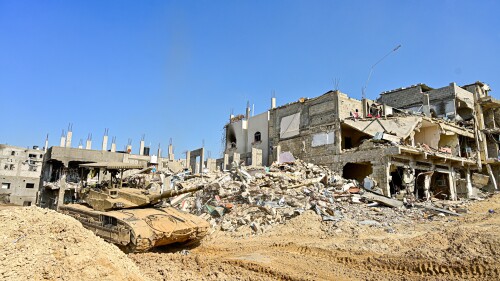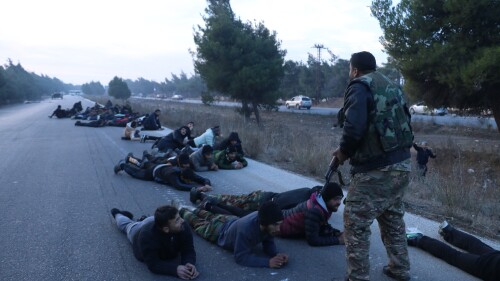First, it is worth recalling the sequence of events. The killing on Thursday of IRGC Quds Force Commander Qasem Soleimani outside Baghdad International Airport by a US MQ9 Reaper Drone firing a Hellfire missile, was the latest escalation in a process that began with the killing of an American contractor by the Iran-supported Kataib Hezbollah militia on December 27. The death of this US citizen led to US action against five facilities of Kataib Hezbollah in Iraq. This, in turn, led to the militia and other pro-Iran elements storming into Baghdad’s Green Zone and beginning a violent demonstration outside the US Embassy. This latter protest raised the specter of the Iran embassy siege of 1979.
The US killing of Soleimani (as well as Abu Mahdi al-Muhandis, commander of Kataib Hezbollah and a number of other IRGC officials) was the latest move in this process of escalation.
The killing of Soleimani was precipitated by Iran’s departure from a tacit ground rule.
What appears to have caused this escalation was the departure by the Iranians from a tacit ground rule hitherto maintained. According to this rule, undeclared but noted by a number of analysts including this author, the Iranian regime was apparently to be permitted by Washington to strike at US allies with impunity, and could even hit at US hardware, but it would be best advised not to harm US citizens.
On December 27, Iran failed to abide by this rule. In so doing, it set in motion the series of events culminating in the death of Soleimani, al-Muhandis and the others.
The killing of Soleimani obligates Iran to respond and in so doing places the regime before a dilemma. Iran is exponentially weaker than the United States on the conventional military level. Its best options lie in asymmetrical warfare. In this regard, the long toil of the late Soleimani and his colleagues provides Iran with a wide suite of options.
The long toil of the late Soleimani and his colleagues provides Iran with a wide suite of options.
Most obviously, the US maintains around 5,000 military personnel in Iraq and just under 1,000 in Syria. Iran has missiles and rockets deployed, and tens of thousands of available personnel in both countries. It has struck in the past. The assassination of Soleimani has not removed this capability. Logistically and operationally, a similar strike to the one that commenced the current round of escalation would be possible to organize.
Iran could also begin a broad popular and political campaign intended to culminate in a demand by the government of Iraq for the withdrawal of US forces. Badr Organization commander Hadi al-Ameri, in a statement following the US operation, appeared to hint at this course, calling on members of parliament and all ‘national forces’ to unite in order to expel ‘foreign forces’ from Iraq.
Further afield, the events of the summer showed that Tehran has the capability of hitting at US allied targets in the Gulf waterways, the Strait of Hormuz, Bab el Mandeb and on the soil of Saudi Arabia and the UAE.
The IRGC, aided by its Lebanese Hezbollah proxy, also possesses networks in Europe, North and South America, and South and East Asia, as evidenced by a list of previous attacks and thwarted planned operations.
So the physical possibility of response, or at least attempted response, is not at issue. But Iran’s dilemma is the following: the current escalation that culminated in the death of Soleimani was the direct result of Iran’s departure from a set of tacit rules in place until then. If the Iranian response appears to be a return to a tacit observance of these rules, then even it is successful it will still project an aura of weakness.
Iran must choose between projecting weakness or fighting a war it can’t win.
The destruction of US hardware, a strike on allies, even a strike by a proxy on a US facility or personnel, will not be sufficient to “even the score.”
But if Iran chooses to adopt the only course of action which would be seen by all as proportionate to the loss of Soleimani – namely the killing by the IRGC or some other Iranian agency of one or a number of US citizens – then the evidence of recent days suggests that the US may well be willing to escalate to a level of confrontation at which the Iranians cannot compete.
This dilemma is compounded by an accompanying fact. While lacking a clear and coherent regional strategy, US President Donald Trump’s administration has made clear in word and deed over the last two years that it has no interest in major re-engagement in the Middle East, or in new conflicts in that arena of “bloodstained sand,” as Trump has referred to the region. Trump’s statements following the killing of Soleimani confirm this impression.
The events of recent days show that the one action which can over-ride this aversion is the targeting of US citizens or personnel. That is, Iran has the incentive of potentially getting to keep much of what it gained in recent years in the Middle East, if it swallows the humiliation of Soleimani‘s loss.
But then its deterrent power and ability to project strength will be perhaps irrevocably damaged. Taking the only path which can adequately avenge that loss, meanwhile, means potentially losing everything in a direct confrontation with the US. It is now Iran’s move. The US escalation has placed Iran in a situation in which there are no easy options. The decision now to be taken by Supreme Leader Ayatollah Ali Khamenei will determine the direction of the Middle East in the next period.
Jonathan Spyer is director of the Middle East Center for Reporting and Analysis and is a research fellow at the Middle East Forum and at the Jerusalem Institute for Security and Strategy.








